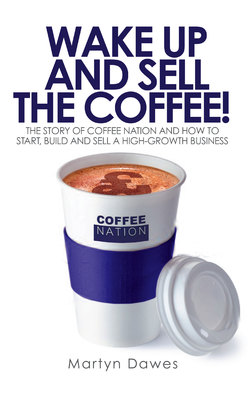Читать книгу Wake Up and Sell the Coffee! - Martyn Dawes - Страница 28
На сайте Литреса книга снята с продажи.
Rethinking the business plan
ОглавлениеI had strong evidence that I now had something that worked and could be scaled up to a large number of locations. Sure, there were still considerable gaps and I was far from certain I was in the right locations, but no business is perfect.
Tony introduced me to his colleague Mark and the three of us set to work. Again, I faced the issue of not being able to pay them for their help. We agreed a deal whereby for funds raised they would take a percentage of the company, depending on the amount. I really had nothing to lose. I’d be happy for them to own a small part of the business (ordinary shares, non-voting) if we raised some proper money.
The new business plan was half the size of my original document. It talked more about what I had achieved. It actually read like a plan for a business:
“We are the UK’s first brand of fully self-service fresh ground coffee concessions.”
“There is a large unexploited market in the UK for coffee-to-go, sold anywhere that demand can be created.”
“Each unit offers a high net margin based on premium pricing and low cost of operation. Each concession requires no dedicated staff to operate them and occupies only 1sq.m. of floor space.”
There was a section on market focus and our unique selling points, broken down into consumer (e.g. fresh ground coffee, convenient in less than 30 seconds) and retailer features and benefits (e.g. additional revenue stream, minimal day-to-day servicing, no maintenance and minimal cost).
Evidence from my latest test sites that the new offer was actually bringing people into the stores as they could now get a fresh coffee to go with a pastry from the in-store bakery went into the plan.
I set out that each machine had a life of five years, although we would depreciate over three. Sales continued to climb month on month and in the preceding four weeks we had averaged over 900 cups per location.
The forecast showed we would be consistently profitable from month 18 and the gross margin was 60%. Importantly, it highlighted that the continued growth of the business could be funded from cash flow after that. If there truly were thousands of locations where a Coffee Nation concession could be located, the business would inevitably need further growth funding down the line, but this plan was written around a sensible investment for what had been achieved to date.
